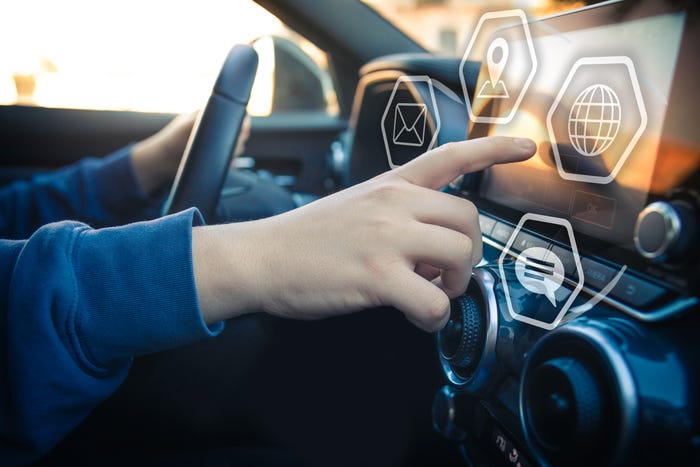Slow and Steady Driverless Roll-Out Eases Consumer Concerns
Adverse consumer reaction to autonomous driving technology's checkered past can be offset by a considered and well-communicated development strategy, analyst says.
April 15, 2024

In the aftermath of last year’s Cruise robo-taxi debacle, it was to be expected that consumers' confidence in autonomous vehicles would flag.
Confidence was already not high because of the disruptive nature of the technology and highly publicized previous accidents involving Tesla’s self-styled “fully self-driving” cars.
One online survey of 2,000 “general population” Americans commissioned by Forbes Advisor revealed a staggering 93% saying they “have concerns about some aspect of self-driving cars, with safety and technology malfunctions topping the list.” Of those surveyed, 61% said they wouldn’t trust a self-driving vehicle with their loved ones and only 29% said they would pay a premium for an AV.
Also, the survey contained bad news for Tesla CEO Elon Musk: Nearly two of three survey respondents said they had lost confidence in Tesla owing to recent safety and technology recalls. Clearly, the technology is in need of some positive PR or, better yet, a new approach to marketing it. According to Robert Camm, principal consultant, mobility Europe at Frost & Sullivan, that should start with redefining the product and how the capabilities of AVs are communicated to the market.
“The SAE level system (of autonomy ratings) works well if you’re inside the industry, but within that you’ve got different use cases, such as highway versus urban environment, traffic assist, highway assist,” he says. “It’s not so cut and dried as simply saying Level 3 versus Level 2. There are many different operating domains within that.”
Camm says the branding of AVs adds to the lack of clarity. “Tesla calling itself 'Full Self-Driving' or Mercedes’s DrivePilot don’t communicate clearly the capabilities of the system.” He wants the industry to drop the SAE categories and communicate “if it’s hands on the wheel or is it hands off the wheel? Is it eyes on the road or can you take your eyes away from the road? Is it highway, is it urban and what’s the speed limit? Clearer definitions around that could help consumers on the capabilities and limits of different systems and give them some confidence in what their system can and won’t do and how they should interact with it.”
Camm suggests that more information should be made public to other road users when autonomous vehicles are on the road, such as informing drivers that this service is in operation and that the system is a work in progress. “This needs to be clearly communicated to other road users and pedestrians and also how to act safely around them and how to stay clear of these systems because there could be a technical issue, as we’ve seen,” he says. He also suggests that Cruise was overly ambitious in launching a fleet of 950 Level 4 robo-taxis in the U.S. “Almost 1,000 sounds like a lot to put on the road for a vehicle that’s a work in progress,” he says.
Camm suggests that future drivers’ tests for learners could include questions about autonomous driving in both the theory and practical parts of the tests. “You should be able to safely operate an autonomous system and understand the limitations of the system and how to use it,” he says. “That will help the transition towards these new technologies.”
Camm also calls for public information campaigns from carmakers to clearly communicate what the system can and cannot do. “An OEM launching a system can’t just call it full self-driving when there’s some limitations in the system,” he says. “So there has to be some regulations on the OEMs, and the OEMs have to make sure that they use not just marketing speech but are clearly communicating what the vehicles can and cannot do.”
But probably the most effective way to regain consumers' trust is to produce self-driving cars that work the way they are supposed to, he suggests. “People aren’t interested in autonomous driving if there’s a 10% or a 20% percent safety improvement,” Camm notes. “It has to be a big change, a huge improvement to justify trust in the technology, and that can’t be measured until you have a wider rollout.” Tracking that degree of substantial improvement of the impact of autonomous driving on road safety would give people more confidence in it, he adds.
Just seeing Level 3 cars on the road and operating safely will inevitably give consumers confidence in them, Camm says. And the more cars they see on the road, the more their excitement will grow. “But it takes just one accident to change the whole perception,” he warns. “So, a phased approach is the right approach, where the vehicle is only operating in areas where it is meant to operate.”
About the Author(s)
You May Also Like
_(2).jpg?width=700&auto=webp&quality=80&disable=upscale)


